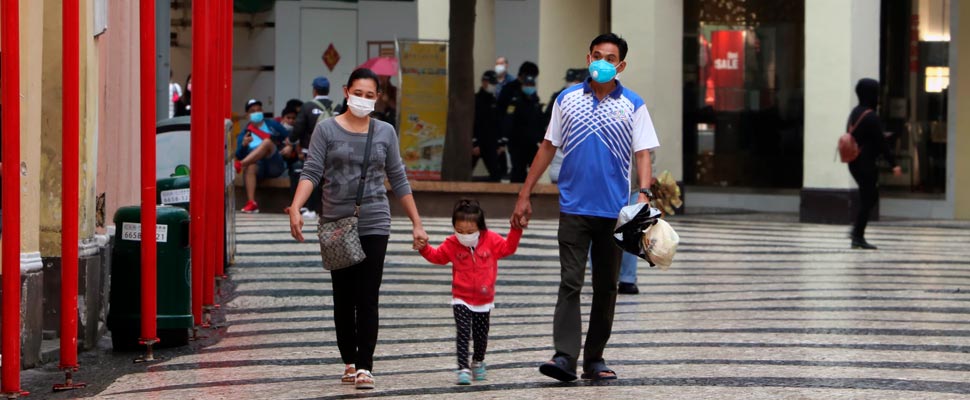Latin America in debt: pending accounts
The unpaid bills of the past and the health crisis have the economies of the countries in the region in trouble.

With the COVID-19 crisis, the battered Latin American economies run the risk of continuing to increase debt. Photo: Unsplash
LatinAmerican Post | Nelson Andrés Tamayo Gaviria
Listen to this article
Leer en español: Latinoamérica endeudada: las cuentas pendientes
It is difficult to find a nation in the world that does not have foreign debt, most governments, at some point, resort to loans to international organizations and to other nations. Latin America is not the exception, credits are frequently managed to correct social programs and that function as financial bailouts. The COVID-19 pandemic has changed the debt landscape in the region, after the collapse of the economy, countries have focused on avoiding the collapse of their health systems and, in some cases, on subsidizing companies and citizens. None of these efforts to combat the consequences of the virus is free, several countries have requested more loans and increased their debt.
Also read: How will Latino governments get out of the post-covid economic crisis?
According to a report published by ECLAC (United Nations Economic Commission for Latin America and the Caribbean), the Latin American economy grew only 0.1% in 2019 and fell 7.7% in 2020, the worst performance in recent years. 120 years. A rebound and recovery are expected in 2021, but, according to the commission, pre-pandemic economic activity levels will not recover until 2024.
Las últimas Perspectivas económicas regionales para América Latina y El Caribe proyectan que la actividad económica en la región crecerá un 4,6% en 2021, después de una contracción de 7% experimentada en 2020, la más pronunciada del mundo.
Más detalles⬇️https://t.co/VPS4GbHNBB pic.twitter.com/rm2tH8aRRB
— FMI (@FMInoticias) April 19, 2021
Accumulated interests
The International Monetary Fund (IMF), made up of 184 countries, is the main global economic fund and is in charge of making most of the loans in the world, it also has specific programs to which developing nations can apply. To manage the pandemic, the IMF allocated more than 66,500 million dollars to Latin America in emergency loans.
However, these loans depend on the borrowing capacity of nations, for the IMF an average debt is one that does not commit more than 70% of a country's GDP, when it exceeds that number, the possibilities of obtaining new credits are considerably reduced and the opportunity to access low-interest rates is also decreasing. Argentina and Brazil are the countries that have the highest public debt in the region, by 2020 both had liabilities that are equivalent to more than 90% and 100% of their Gross Domestic Product (GDP). Colombia has 61%; Mexico, 41%; Peru, 35% and Chile, 32%.
????Según informe de la CEPAL
????Argentina terminó con el nivel más alto de deuda de América latina en 2020 pese al canje con los bonistas
????Los pasivos del Estado ya equivalen al 104% del PBI argentino, mientras que un año antes era de 90%; además aclaró que el 80% es en dólares pic.twitter.com/0DvFur7XHb
— Info Finanzas Argy ????????⚡️ (@iFinanzARS) April 21, 2021
According to ECLAC, although the IMF has allocated these millionaire funds: “these financial instruments do not benefit all countries equally. Those with solid economic foundations, such as Chile, Colombia, and Peru, can access financing without quota limits. However, this is not an option that is available for most countries, particularly for the small island states of the Caribbean ”. In other words, although credits are usually a key tool for the economies in the region, only the most stable countries that have better debt management tend to obtain extensions and sufficient participation in aid packages, such as those proposed in the Instrument Rapid Financing Facility and the IMF Rapid Credit Facility.
Renegotiate debt
In the world, it is rare for a country to decide not to pay its foreign debt, failure to do so may mean the devaluation of its currency, being excluded from certain areas of international trade, and even receiving serious sanctions from the IMF and its members. This is why when a country does not have the capacity to pay off its debts, the safest step is to renegotiate them, which usually means an increase in interest, in addition to, in extreme cases, having to pay fines to continue with the loans.
Governments take their financial obligations to the IMF and their external debt in general very seriously. For example, the president of Colombia, Iván Duque, presented before Congress a controversial tax reform, with which he seeks, among other things, to increase investor confidence that the country is capable of assuming its debt and even acquiring more credits. Only in the last year both Ecuador and Argentina have had to renegotiate their debts, and although they managed to close deals with bondholders, they will assume a higher interest payment and for a longer time.
El Banco Mundial llama a “evitar que se extienda una crisis de deuda” en América Latina. Para que los países puedan gastar en las necesidades sociales y de salud de sus poblaciones, los acreedores privados deberán aceptar menores tasas de interés
https://t.co/gdl2OFIOfP— EL PAÍS América (@elpais_america) March 10, 2021
What many experts agree on is that Latin America will need help to avoid a debt crisis this year . In March, David Malpass, president of the World Bank, made an international call to restructure the region's debt and expand investment in health. On the other hand, the president of Argentina, Alberto Fernández, asked the IMF that the higher-income countries give up the resources that they will receive due to the pandemic to low- and middle-income countries.




